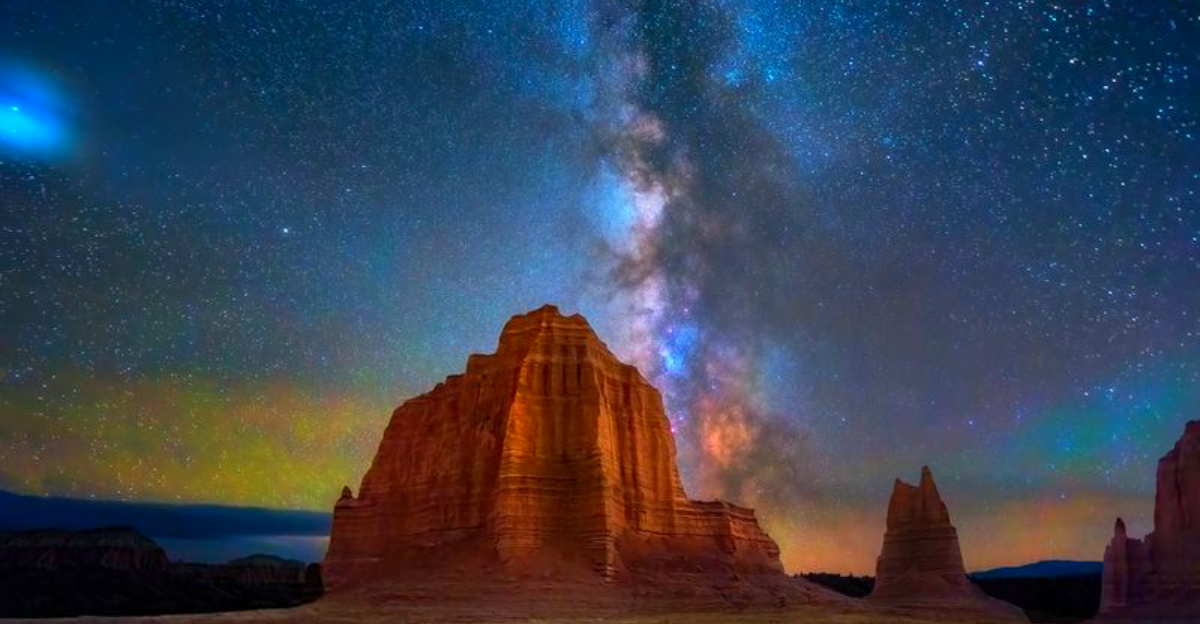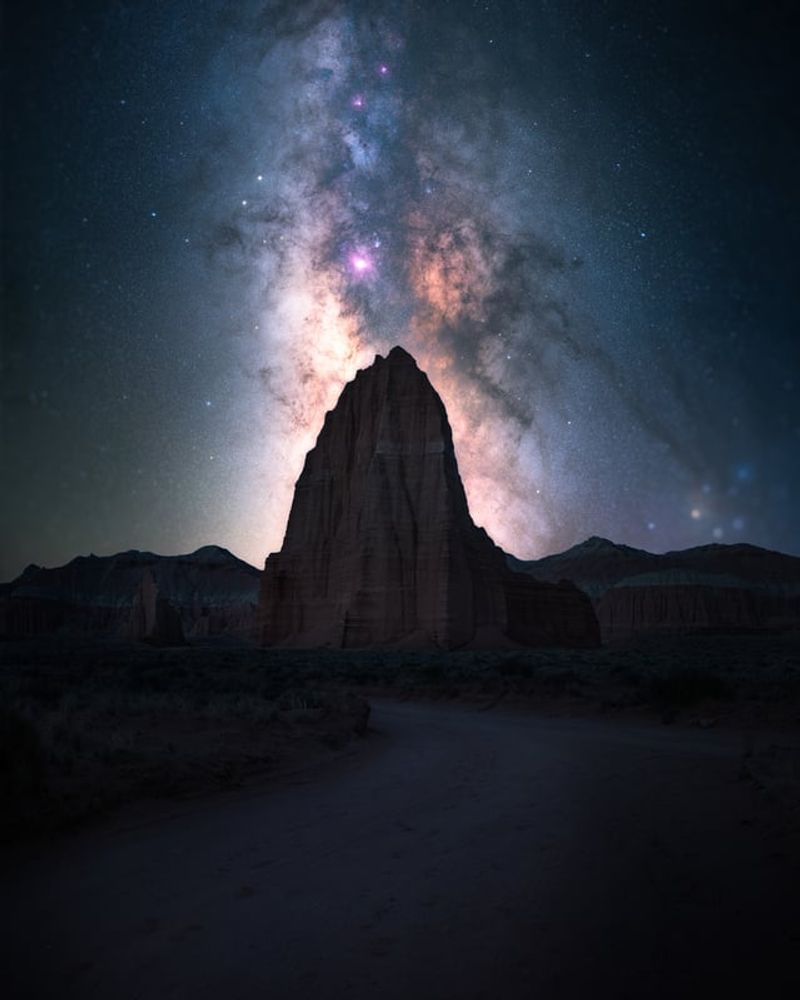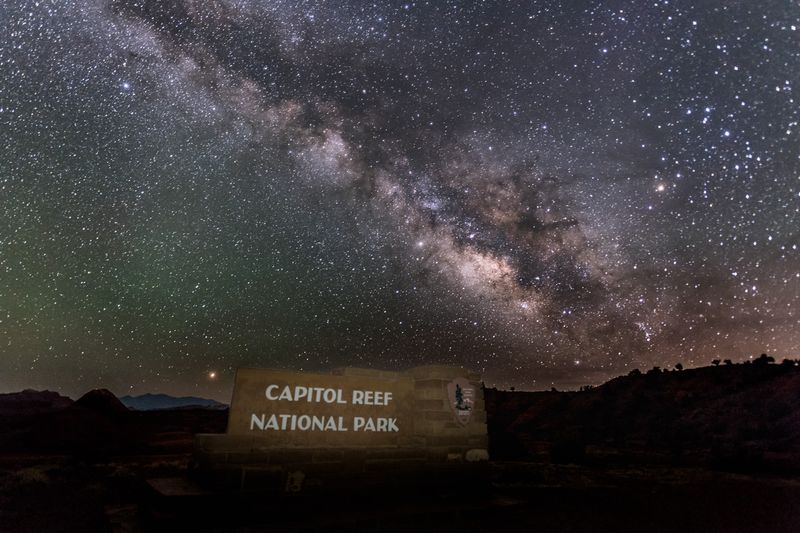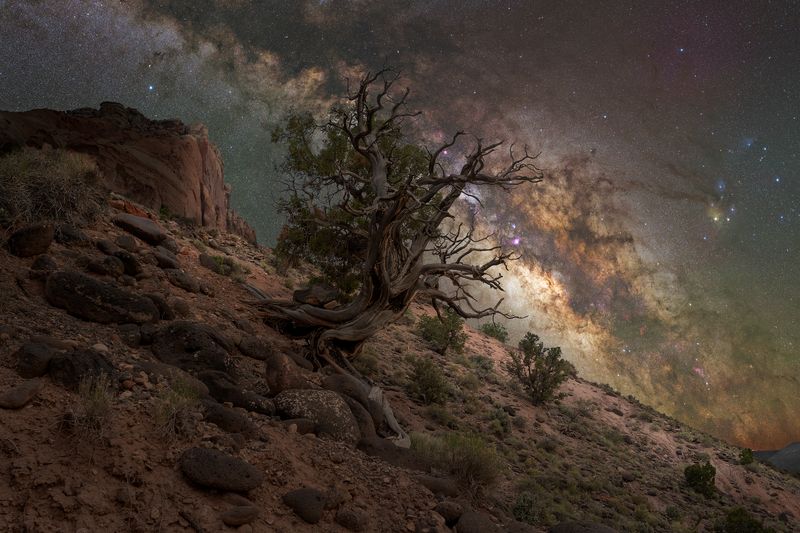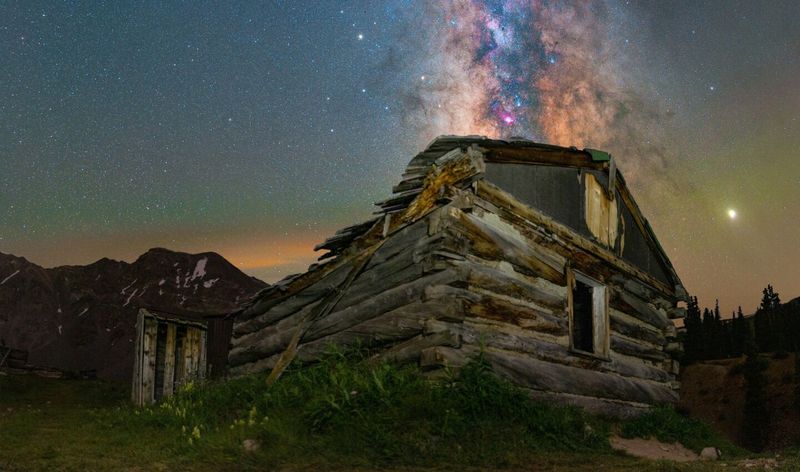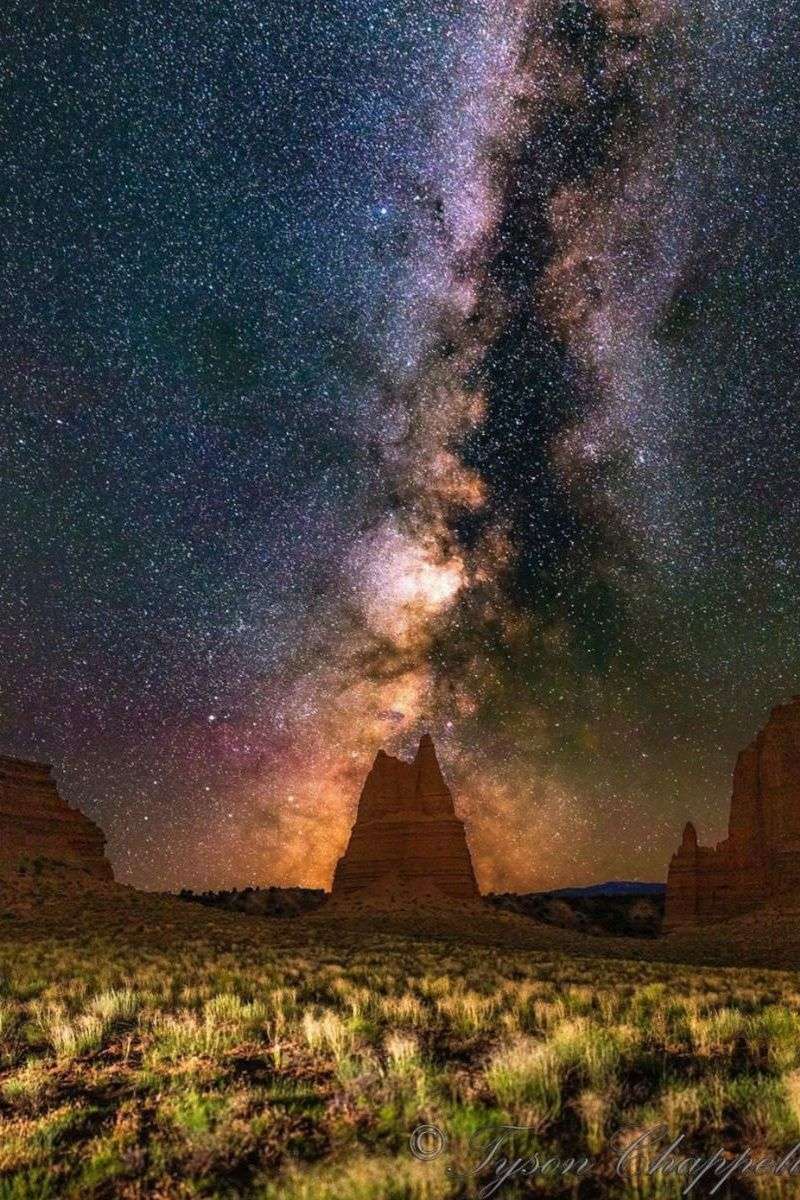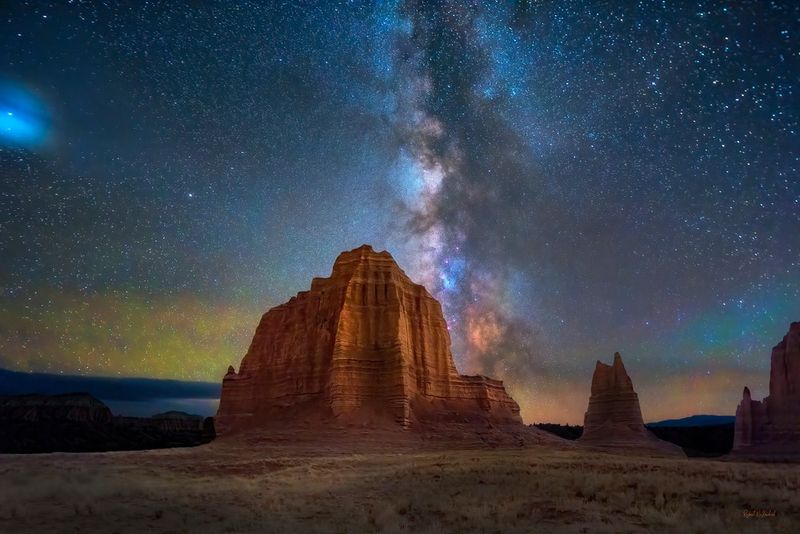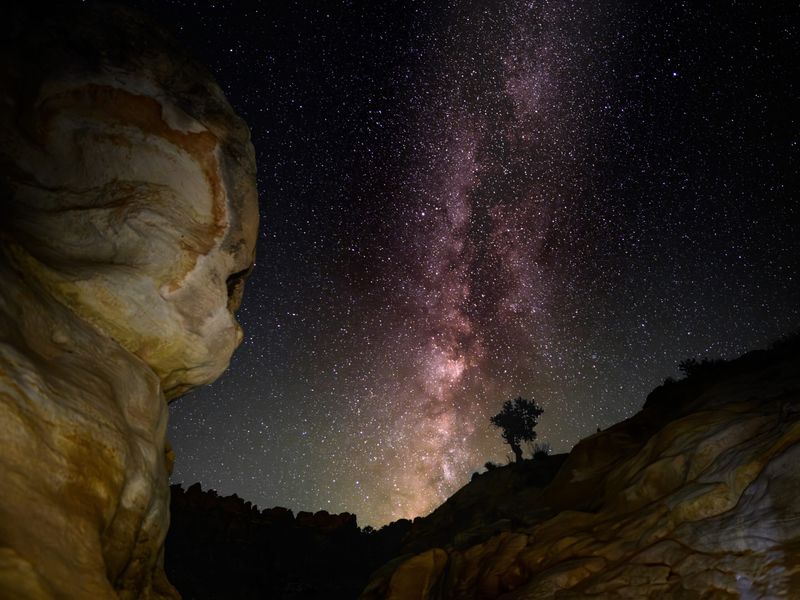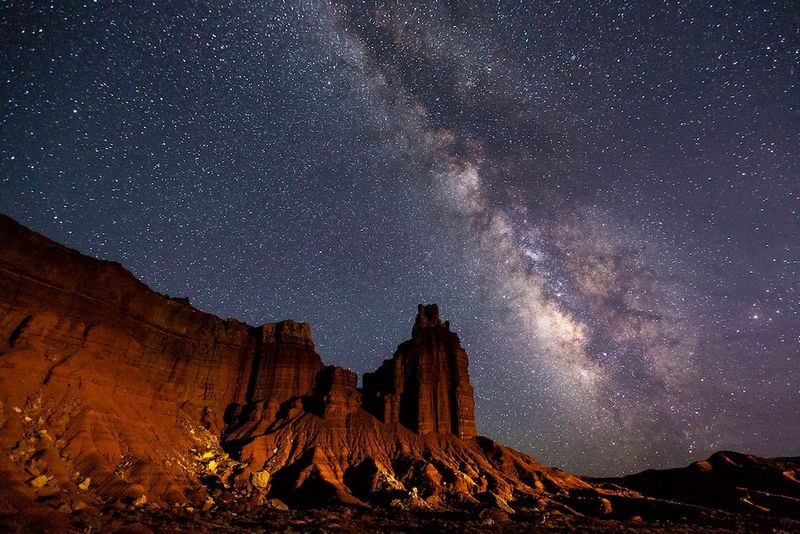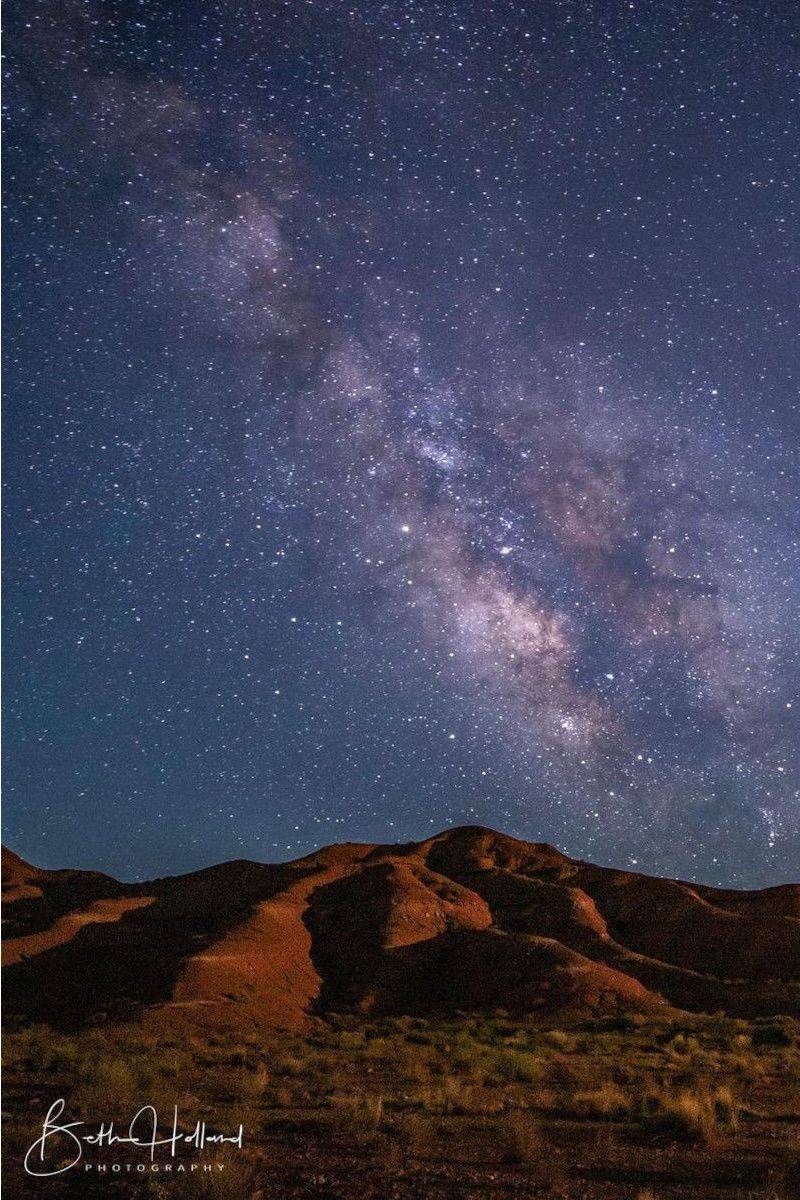After chasing stars from Maine to California, I’ve finally found the place that takes my breath away every single night. Capitol Reef National Park in Utah isn’t just beautiful during the day, when the sun goes down, the sky transforms into something almost magical. With thousands of stars visible to the naked eye and the Milky Way stretching overhead like a glowing river, this park has earned its reputation as one of America’s best stargazing destinations.
1. It’s an International Dark Sky Park (Gold-Tier)
Capitol Reef earned something really special back in 2015 and kept it through 2025: the official Dark Sky Park designation from DarkSky International. What does that mean for you? The park has proven it protects its night skies with smart lighting choices and keeps light pollution away.
Gold-tier status isn’t handed out easily. Only parks with exceptionally dark skies and strong commitment to keeping them that way receive this honor.
When you visit, you’ll notice the difference immediately—stars appear brighter and more numerous than almost anywhere else in the country. The park staff works hard to maintain responsible lighting practices, so future generations can enjoy the same stunning views.
2. Rangers say these are the best stargazing spots (and they’re open to everyone)
Park rangers have done the homework for you by identifying the absolute best places to set up for a night under the stars. In the Fruita Area, head to Panorama Point, Danish Hill, Slickrock Divide, or the Fruita Campground Amphitheater parking lot for wide-open views.
Down south in the Waterpocket District, Cedar Mesa Primitive Campground and the Burr Trail Switchbacks picnic area offer stunning vantage points. Cathedral Valley Primitive Campground in the North District gives you remote, pristine darkness.
All these locations are accessible year-round and officially recommended by the National Park Service. Just remember to check current road conditions and area alerts before heading out, especially to the more remote districts.
3. “Half the park is after dark”: near-pristine skies you can feel
There’s a saying among park staff that really captures the magic here: half the park experience happens after dark. Capitol Reef’s remoteness creates something you can actually feel when you look up—a connection to the cosmos that’s increasingly rare in our modern world.
Light pollution is practically nonexistent, allowing your eyes to adjust fully to the darkness. Within twenty minutes, you’ll see stars you never knew existed.
The National Park Service itself highlights Capitol Reef as offering some of the very best night-sky viewing in all western national parks. That’s saying something when you consider the competition, but the combination of location and protection makes this place truly special for astronomy enthusiasts and casual stargazers alike.
4. A full week of star parties & talks each September
Every September, Capitol Reef hosts the Heritage StarFest, turning the park into a celebration of all things celestial. Rangers lead constellation tours, share fascinating astronomy talks, and set up telescopes for public viewing—all completely free.
Beginner astrophotography workshops teach you how to capture the night sky with your own camera. In 2025, the main events ran September 16–20, with telescope programs centered at Fruita Campground, followed by photography workshops September 25–27.
Dates shift slightly each year, so checking the park calendar ahead of time is smart. Whether you’re a complete beginner or already know your constellations, StarFest offers something memorable. Meeting fellow star enthusiasts adds another layer of fun to the experience.
5. Torrey—the gateway town—is Utah’s first Dark Sky Community
Just west of Capitol Reef sits Torrey, a small town with big commitment to preserving darkness. Recognized as Utah’s very first Dark Sky Community, Torrey actively works to protect night skies through careful lighting design and community education.
This designation matters because light pollution doesn’t stop at park boundaries. When surrounding communities care about darkness too, everyone benefits from better stargazing conditions.
Staying in Torrey means you can enjoy incredible night skies right from your hotel or campground. Local businesses understand the value of dark skies and participate in keeping outdoor lighting minimal and properly shielded. The town’s dedication creates a buffer zone that helps Capitol Reef maintain its spectacular celestial displays for visitors and residents alike.
6. Wide-angle Milky Way views from classic overlooks
Panorama Point and the amphitheater parking lot aren’t just great for daytime views—they transform into perfect Milky Way viewing platforms after sunset. Unobstructed horizons in every direction let you capture the entire galactic arch on moonless summer nights.
Photographers love these spots because you can frame the Milky Way rising over Capitol Reef’s iconic rock formations. Remember to bring a red headlamp to preserve your night vision and everyone else’s viewing experience.
One important rule: light-painting isn’t permitted in the park, so plan your photography accordingly. The natural beauty of the star fields against the landscape is stunning enough without artificial enhancement. Time your visit during new moon phases for the most dramatic contrast and visibility.
7. Cathedral Valley & the Waterpocket Fold = dark, dramatic backdrops
Cathedral Valley in the North District offers something extraordinary: temple-like monoliths that create striking silhouettes against glittering star fields. The remote location guarantees some of the darkest skies in the entire park.
Meanwhile, the South District’s Waterpocket Fold—a massive wrinkle in the Earth’s crust—provides sweeping geological drama that pairs beautifully with the cosmos above. Both districts feature ranger-recommended viewing sites specifically chosen for their darkness and scenic value.
Fair warning: getting to these areas requires navigating rough roads, so checking current conditions and alerts before you go is essential. High-clearance vehicles are often necessary, but the reward is worth the extra effort—pristine darkness and unforgettable views that few visitors ever experience.
8. Easy planning tools the park recommends
Capitol Reef makes trip planning surprisingly simple by pointing visitors toward helpful online resources. The park recommends checking clear-sky forecast tools before you arrive, so you can time your visit around weather patterns and avoid cloudy disappointments.
Moon phase matters enormously for stargazing, and the park’s events calendar helps you plan around both lunar cycles and special programs. New moon periods offer the darkest skies and best visibility for faint stars and the Milky Way.
These planning tools take the guesswork out of your visit, helping you maximize your chances of perfect viewing conditions. A little advance research can mean the difference between an okay night and an absolutely spectacular celestial show that you’ll remember forever. Smart planning equals better stargazing.
9. Simple safety—and photography—rules that keep the night dark
Staying safe while stargazing isn’t complicated, but it does require some advance thought. Scout your chosen spot during daylight hours so you know exactly where you’re going and can avoid hazards like cliff edges or rough terrain in the dark.
Always pull completely off roads when parking, and use only red lights in viewing areas to preserve everyone’s night vision. White lights ruin the experience for other stargazers and take your eyes thirty minutes to readjust.
For photographers, remember that light-painting is prohibited throughout the park—the rule helps maintain the natural darkness that makes Capitol Reef special. Following these simple guidelines ensures everyone enjoys the night sky safely while protecting the pristine conditions that earned the park its gold-tier designation.
10. Year-round stargazing, with prime Milky Way season in summer
Unlike some destinations that only shine during specific seasons, Capitol Reef delivers incredible stargazing experiences twelve months a year. The park officially lists stargazing as a nighttime activity across all seasons, so there’s never a bad time to visit.
That said, summer brings peak Milky Way visibility, when the galactic core rises high and bright in the southern sky. Plan your summer trips around new moon dates for maximum contrast and the faintest star visibility.
Winter stargazing offers its own rewards—clearer air often means even sharper views, and different constellations dominate the sky. Colder temperatures do require warmer clothing, but the spectacular views make bundling up worthwhile. No matter when you visit, Capitol Reef’s protected dark skies deliver unforgettable cosmic displays.
